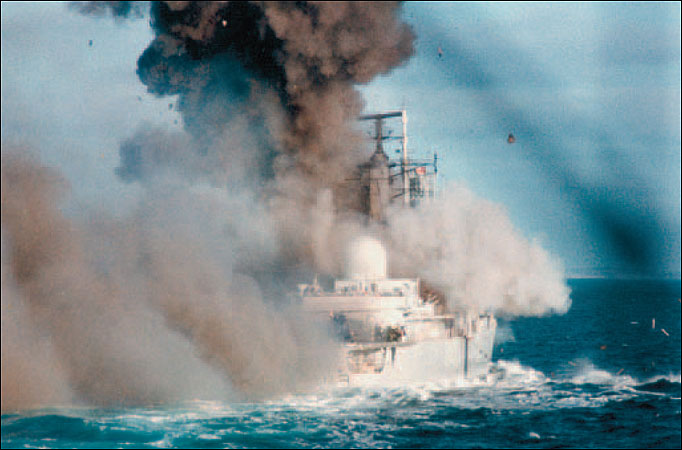The Southeast Asian Theater
August 8-November 4, 1976
August 8-November 4, 1976
Southeast Asia at the start of the war
Malaya
In the weeks following the start of hostilities, the 22nd Corp, soon to be renamed the 15th Army, with 198,000 soldiers under General Takuma Saito made painfully slow progress as it advanced south into British Malaya. The first obstacle was the extensive belts of barbed wire, anti-vehicle ditches, and minefields that had been quickly established by the Commonwealth to protect the Malayan Peninsula after Japan’s victory over Siam in 1972. Opposing the Japanese was a composite force of 145,000 British, Malayan, New Zealander, and Australian troops led by Lt. General Sir Garrett Travers. Commonwealth aircraft and anti-ship missiles usually stopped the Japanese from landing troops along the coast, reducing the battle to a deadly head-to-head confrontation. Commonwealth artillery, such as the Excalibur Mulitple Rocket Artillery System, proved especially effective inflicting serious casualties wherever Japanese forces consolidated. Despite the heavy losses however, Japan continued to pour reinforcements into the conflict forcing the Commonwealth to fall back further south. Special units of Malayan commandos were left behind in the central highlands to wreak havoc on Japanese supply lines. On November 4, the Japanese had forced their way as far south as the Pahang River in the east and to the outskirts of the important city of Kuala Lumpur in the west.
An Excalibur Multiple Rocket Artillery System in action in British Malaya
October, 1976
Burma
While not a priority for any of the belligerent nations, the Commonwealth of Burma was invaded nonetheless by Indian forces from the west and a combined Laotian-Vietnamese army in the east. The job of protecting the lightly defended dominion of 31 million fell to Burmese Major General Khin Hlaing. Wisely, Major General Khin Hlaing planned to husband his resources and wage a guerrilla war against the occupiers. Difficult terrain, partisan harassment, and the monsoons slowed the invading forces considerably. As such by November the capital city of Rangoon was still in Commonwealth hands despite most other major cities having fallen.
Bengal and Assam
Resistance in the recently annexed territories of Bengal and Assam increased after the outbreak of hostilities. The various bands of guerrillas and underground movements while not strong enough to challenge Indian forces in open battle did manage to tie down large numbers of URI troops. The Commonwealth could provide only limited material support to the partisan forces but continued to treat the exiled governments as the legitimate rulers.
While not a priority for any of the belligerent nations, the Commonwealth of Burma was invaded nonetheless by Indian forces from the west and a combined Laotian-Vietnamese army in the east. The job of protecting the lightly defended dominion of 31 million fell to Burmese Major General Khin Hlaing. Wisely, Major General Khin Hlaing planned to husband his resources and wage a guerrilla war against the occupiers. Difficult terrain, partisan harassment, and the monsoons slowed the invading forces considerably. As such by November the capital city of Rangoon was still in Commonwealth hands despite most other major cities having fallen.
Bengal and Assam
Resistance in the recently annexed territories of Bengal and Assam increased after the outbreak of hostilities. The various bands of guerrillas and underground movements while not strong enough to challenge Indian forces in open battle did manage to tie down large numbers of URI troops. The Commonwealth could provide only limited material support to the partisan forces but continued to treat the exiled governments as the legitimate rulers.
Last edited:















